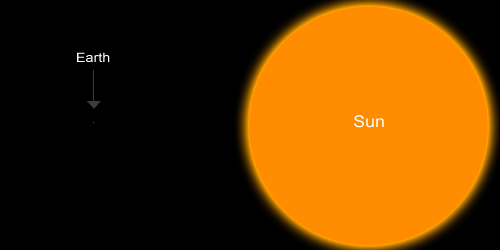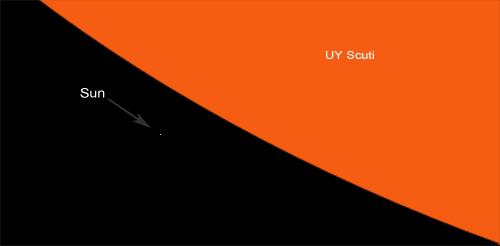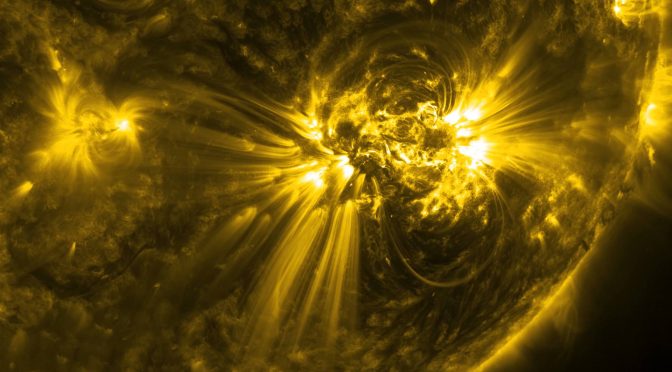Unveil the mysteries of the universe as we journey through a comprehensive analysis of the Sun, furnished by groundbreaking 4K imagery from NASA’s Solar Dynamics Observatory (SDO). This mission, part of the Living With a Star (LWS) program, unravels the intricacies of the celestial body that nurtures life on Earth. Moreover, we take a comparative look at the colossal stars in our galaxy that dwarf our Sun.
NASA’s Solar Dynamics Observatory: Our Eye in the Sky
In February 2010, the SDO embarked on a remarkable mission to capture ultra-high quality images of the Sun. This crucial project is part of NASA’s Living With a Star (LWS) program, managed by the Heliophysics Division of NASA’s Science Mission Directorate. Their goal is to decipher the intricate Sun-Earth systems that directly impact and influence life on our planet. Orbiting at a distance of about 36,000 km (22,369 miles) at a speed of 3.075 km/s (1.9 miles/s), the SDO images the Sun every twelve seconds in ten different wavelengths of ultraviolet light, invisible to the human eye.
The Sun’s Fierce Dance: A 4K Video
In a 4K video presented by NASA’s Goddard Space Flight Center, we witness the Sun’s dance of ultra-hot material in extraordinary detail. This unprecedented view exposes the Sun’s constant flow of particles, known as the solar wind, its occasional eruptions of coronal mass ejections, and explosions of X-rays called solar flares. All these solar activities can ripple throughout our space environment, reaching the furthest corners of our solar system. Experience the video:
Facts and Figures about the Sun

- Classification: Star.
- Distance from Earth: 149.6 million km (92.9 million miles). Light needs 8 minutes and 19 seconds to get from the Sun to the Earth, traveling at a speed of 299,792,458 m/s (meters per second).
- Surface temperature: 5,504 ℃ (Celsius) or 5,778 K (Kelvin) or 9,940 °F (Fahrenheit)
- Surface area size: 12,000 times the size of Earth’s. It would take you about 190 earth-days to fly (once) around the sun, by flying at a full speed of an average commercial plane (about 965 km/h or 600 miles/h). On Earth you would need about 42 hours.
- Mass: 333,000 times the mass of Earth.
- Diameter: 1,391,000 km (864,400 miles). It’s about 109 times the diameter of Earth.
- Volume: 1.41×10^18 km (about 1,300,000 Earths).
- Surface gravity: 28 times the surface gravity of Earth. Meaning that, if your weight is 70 kg (154 lb) on Earth, it will be 1960 kg (4321 lb) on the Sun.
The Sun in brief:
Our Sun, a star at the center of our solar system, is 149.6 million km (92.9 million miles) away from Earth. Light from the Sun takes 8 minutes and 19 seconds to reach us, traveling at a speed of 299,792,458 m/s. The Sun’s surface temperature is a staggering 5,504 ℃ (or 5,778 K or 9,940 °F), and its surface area is 12,000 times the size of Earth’s. With a mass 333,000 times that of Earth, the Sun’s gravity is 28 times more potent than Earth’s. Interestingly, the Sun’s energy is not produced by constant fire as some might think, but by nuclear fusion reactions, where Hydrogen fuses into Helium.
The Biggest Stars
While our Sun might seem vast, it’s significantly smaller than some other stars in our galaxy. For years, UY Scuti held the title of the largest known star, but recent research has introduced a larger contender: Stephenson 2-18. To visualize the difference, consider comparing a grain of sand’s surface area with that of a yoga ball—that’s roughly the size difference between our Sun and UY Scuti:

Remarkably, if you could fly a commercial airplane at full speed (about 965 km/h or 600 miles/h) around these stars, it would take you about 190 days to circumnavigate the Sun, while a single trip around UY Scuti would take approximately 1071 years!
For a more in-depth comparison, check out the video:
The Birth and Life of Stars
To further explore the cosmic ballet of star formation and life, we recommend the informative video by Kurzgesagt:
The Universe’s Gentle Giants: A List of the Largest Stars
For those intrigued by the sheer enormity of stars like UY Scuti and Stephenson 2-18, here is Wikipedia’s comprehensive list of the largest known stars in our galaxy.
Thoughts
Our exploration of the Sun and the universe’s biggest stars is a humbling journey. It reveals the enormous scale of the cosmos and our place within it. Understanding these celestial bodies not only provides insights into our existence but also inspires us to ask bigger questions about the nature of the universe itself.

